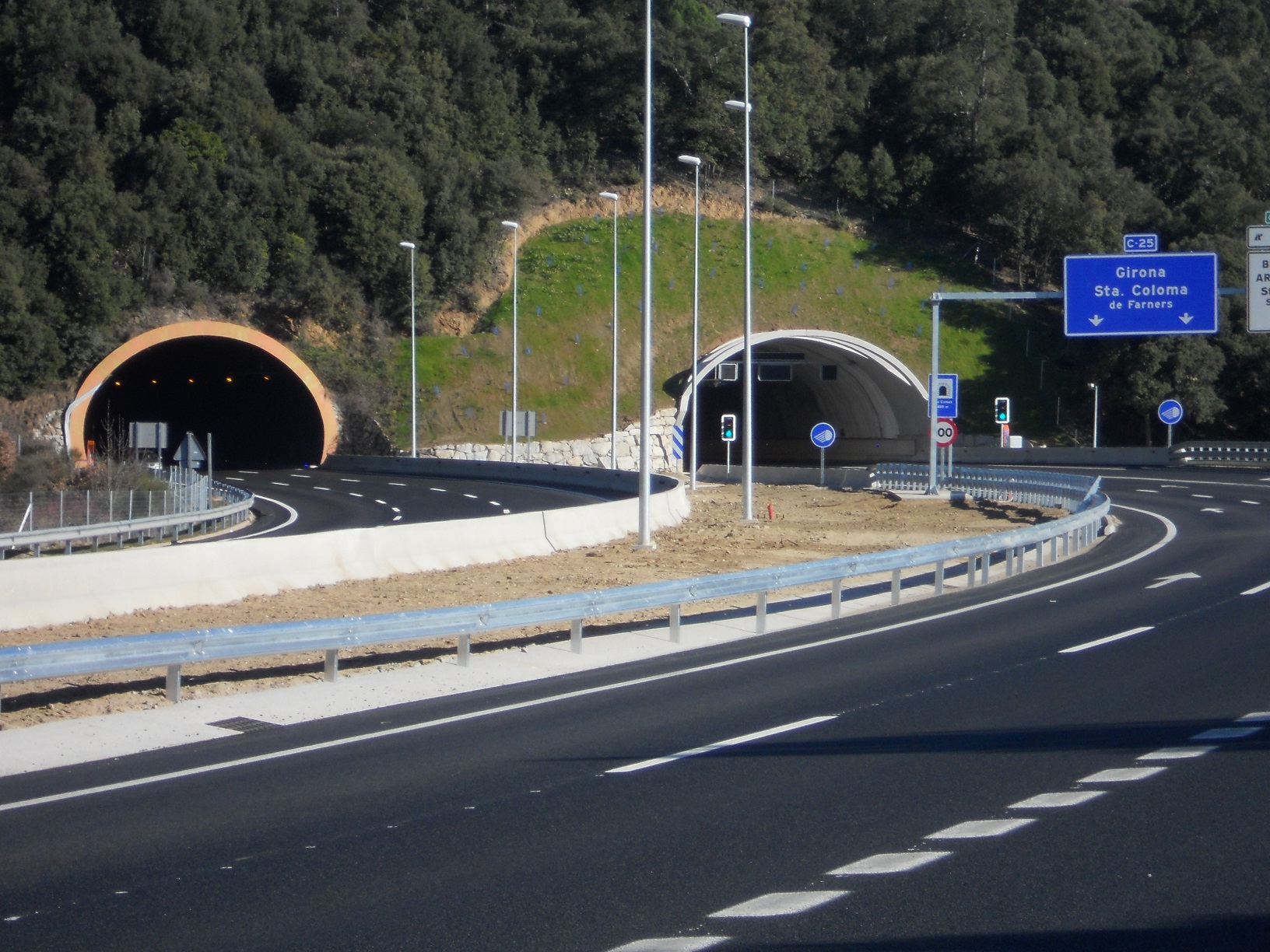FCC finishes the Eix Transversal, now open to the public
- The Eix Transversal is Spain’s longest shadow-toll motorway
- The Citizen Services company has built two of the motorway’s nine subsections

The Eix Transversal (motorway C-25) job, which consisted in twinning 153 kilometres of the corridor between Lleida and Girona, has now been opened to the public. Construction was done under a 33-year road management and maintenance concession granted to Cedinsa Concesionaria, an FCC/Caixa Catalunya partnership.
To build the four-lane motorway, a new two-kilometre section of motorway was laid and another 148.2 kilometres of existing two-lane road was twinned.
Road C-25 is divided into three sections (Cervera/Manresa, Manresa/Vic and Vic/Caldés de Malavella) and nine subsections, two of which were built by FCC for 181 million euros. One was the 13-kilometre-long Arbucies subsection between the Mas Rumeu Tunnel and the Begís Tunnel. Because this stretch of road lies in quite a mountainous area, numerous structures were included: seven viaducts (Pla de Perer, Sot de l’Ullastre, Riudecós, Sot de la Galtera, Can Canaleta, Sant Miguel de Cladells and Tres Camins) and three tunnels (Les Comes, Joanet and Begís). The other subsection built by FCC is 21.8 kilometres long, between Santa Mariá d’Oló and Gurb, and it features the Pere Riera Viaduct, the Plan del Roure y Sant Bartomeu Viaduct and the 730-metre-long Fontfreda Tunnel.
The project’s budget was 752.4 million euros, and the regional government will be paying an average of 69.8 million euros in shadow tolls until the year 2040. The company that holds the concession plans to earmark 227 million euros for upkeep and operation of the Eix Transversal while the concession lasts, plus an additional 237 euros for reinvestment.
The infrastructure was designed in the eighties with the goal of breaking up Catalonia’s typically radial road layout, which ran all transport infrastructure through Barcelona. It now registers between 8,000 and 17,000 vehicles per day. Heavy vehicles make up 20 to 30% of the traffic, depending on the section of road, so twinning has greatly improved road safety.
Special care was taken with the environment in both design and execution. Wildlife crossings were built; drainage structures were improved; noise barriers and noise-reducing pavement were installed; and the earth slopes on the sides of the motorway were treated to avoid erosion and make the road blend more smoothly into the landscape.








